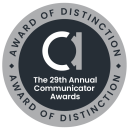Did you know that marketing has been around for thousands of years?
With any exchange between buyers and sellers of purchased goods (even in ancient times), it’s human nature to use some form of marketing to make the sale.
Take the Silk Road days where merchants presented their wares using good ol’ charm, persuasiveness, and trust. But with multiple vendors selling the same weapons, textiles, or porcelain, we assume each one had their own special way (aka sales pitch) of winning over their buyers and standing out from the competition.
Sounds all too familiar, right?
The truth is, marketing as a concept hasn’t changed very much.
But what has changed is the way we go about marketing. And it’s all thanks to one of the biggest game changers in recent years—technology and the Internet.
It’s no surprise that the era we’re living in today is constantly evolving at breakneck speed. With the next greatest invention waiting to hit the market, it’s easy for businesses to fall behind, drift into social media overwhelm, or lose their bearings when it comes to growth.
If there’s one nugget of advice to take away from this post, it’s to hone the voice of your business and presence through brand storytelling marketing.
So how did we go from bartering and exchanging goods to getting personal with storytelling and brand identity in our current sharing economy? Let’s take a look at how marketing, products, and businesses have evolved.
The Inventive Early Days
Before any form of advanced technology, essential goods were traded and handmade in small batches.
Pure and simple, it was all about word of mouth marketing and communications. Sellers earned the appreciation, respect, and trust from their buyers who then went on to spread the word about the high quality wares.
As the 1900s arrived, mass production kicked in along with the telephone and radio so news traveled quicker.
Fast forward to the birth of TV and the “mad men” years in the 50s and 60s. Advertising exploded in popularity and marketing became an essential part of doing business.
Things get interesting in the 80s with infomercials, commercials, product promotion, and working on building relationships rather than going after the one-time deal.
But it’s the digital age that changed the marketing game as we know it.
The Beginning of Digital Marketing
When the World Wide Web was launched in the early 90s, who knew it would lead to all the conveniences we have today?
As companies looked to continue building their image and market share, curious internet users tested out the web.
For those of us who can remember, it was a static, barebones world with little-to-none interaction at first. Then the first clickable banner ads appeared. The now-obsolete search engines were launched too.
But a few major players stuck around like the rise of email marketing. Personal web pages or blogs also evolved to become an integral marketing tool we still use today.
Jump to where we are now with social media apps, SEO, automation, email sales funnels, inbound marketing, etc. and the tools and opportunities to get your business seen and heard are nearly endless.
So where do you start when you want an integrated marketing and communications plan?
Take the ancient forms of marketing (word of mouth, persuasiveness, building trust, etc.) and the online tools we’ve been given today. Then use the marketing methods that have stood the test of time while taking advantage of the new and improved online world.
After that, it’s time to start telling stories.
The Rise of Storytelling Marketing
Good storytelling marketing is what gives businesses an edge.
A story is so enticing that it turns heads and makes curious bystanders or app users wander over to check out why there’s a crowd gathering around you.
When you tell your ideal audience your story, the heart, and soul of what you do and why the people who believe in your business start showing up at your doorstep/website/sales page.
They’ll show their support through a purchase, or rave about you to the next person they meet.
Because consumers today are looking for more, they’re looking to see what makes your product or service different, they’re researching to see if what you offer is proven to help make their lives better, and they want to understand that you’re passionate and genuine about it all.
The truth is, everyone and their grandmothers with a smartphone are sharing pieces of their story online. Heck, even guilty dogs and sleeping kittens have gone viral and claimed their fame on Instagram.
So if your business is hiding in the shadows, or if you’re looking for your brand voice, it’s time to step out and step up. Face your marketing communication strategy head on, but you don’t have to do it alone.
Get a team or tribe behind your company. Because before the storytelling begins, it’s vital to know how to tell your story, the everyday language you’re going to use, and who you want to reach (brand workshops are where we get crystal clear on this!)
At the end of the day, stories are what businesses should always be striving to tell. Believe us, the right customers are out there ready to listen and pass on your message.
Are you ready to jump into the spotlight and develop your Storytelling Marketing? Reach out to the Z’Onion team and together we’ll help you craft your most epic story from beginning to end.


























